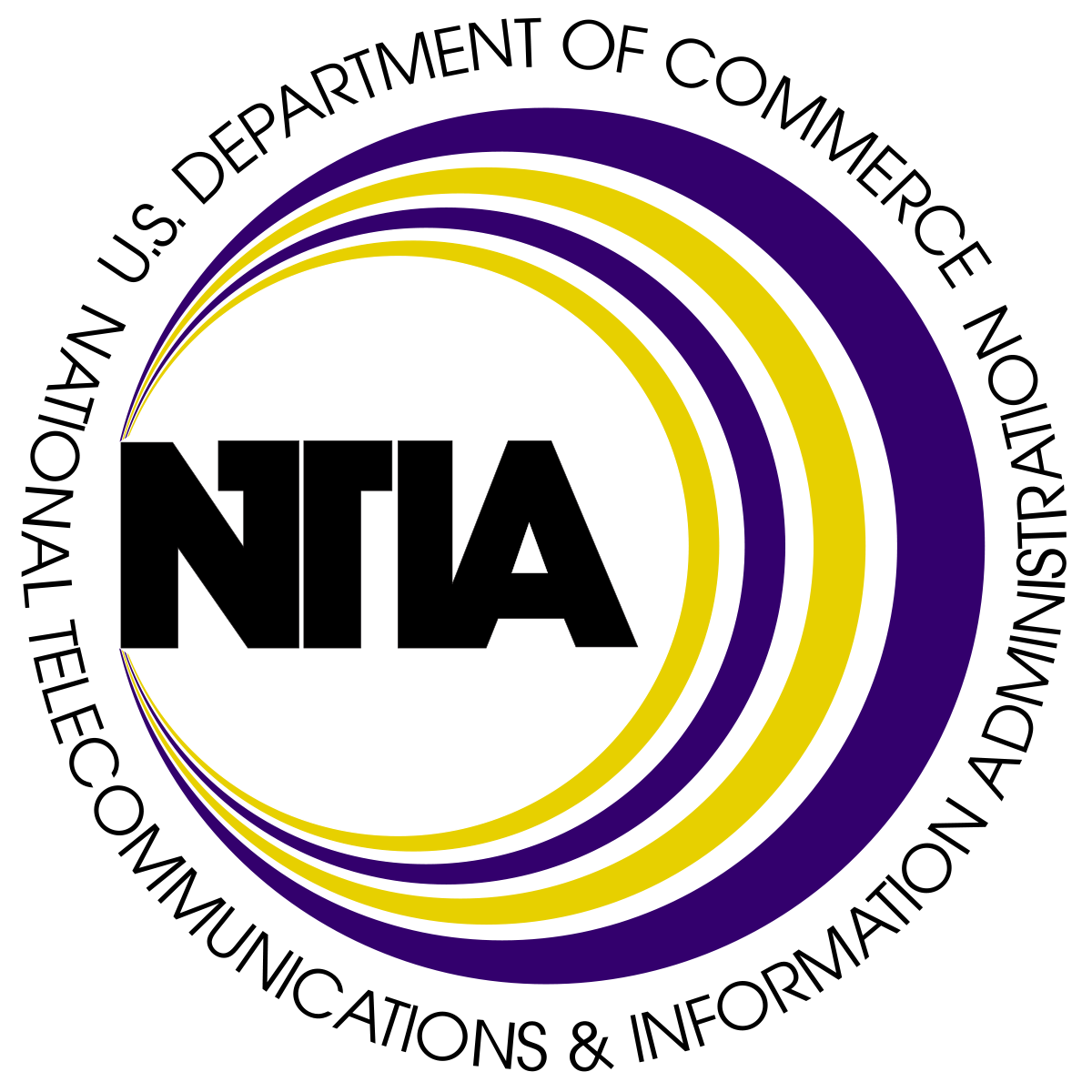Image: Shutterstock
Blog editor’s note:
This is important. If you have expertise in this area, you really should comment.
Below are excerpts from the NTIA notice in the Federal Register. Access the full notice here.

Impact of L-Band MSS ‘Direct-to-Device’ Operations on GPS

AGENCY:
National Telecommunications and Information Administration, Department of Commerce.
ACTION:
Notice; request for comment.
SUMMARY:
The National Telecommunications and Information Administration (NTIA) is seeking information and public comment on the potential impact on the GPS L1 signal at 1575.42 MHz of the increasing deployment of mobile devices capable of operating on satellite systems in the L-band at 1610-1660.5 MHz. Under current FCC rules, these devices are permitted to operate subject to a substantially less restrictive out-of-band emission limit than similar devices transmitting on the same frequencies and connecting to terrestrial base station systems. NTIA is seeking public comment on the risk of interference posed by this increased deployment of mobile devices capable of operating on L-band satellite systems at 1610-1660.5 MHz, as well as potential mitigation options to safeguard GPS systems while facilitating the potential benefits of direct-to-device services (D2D services).
DATES:
Written comments must be received on or before February 10, 2025.
ADDRESSES:
All electronic public comments on this action, identified by Regulations.gov docket number NTIA-2024-0005, may be submitted through the Federal e-Rulemaking Portal at https://www.regulations.gov. The docket established for this request for comment can be found at www.Regulations.gov, NTIA-2024-0005. To make a submission, click the “Comment Now!” icon, complete the required fields, and enter or attach your comments. Additional instructions can be found in the “Instructions” section below, after SUPPLEMENTARY INFORMATION .
FOR FURTHER INFORMATION CONTACT:
Please direct questions regarding this Request for Comment to Ashley Davenport at [email protected] with “Impact of L-band MSS D2D Operations on GPS” in the subject line. If submitting comments by U.S. mail, please address questions to Ashley Davenport, National Telecommunications and Information Administration, U.S. Department of Commerce, 1401 Constitution Avenue NW, Washington, DC 20230. Questions submitted via telephone should be directed to (202) 482-0297. Please direct media inquiries to NTIA’s Office of Public Affairs, telephone: (202) 482-7002; email: [email protected].
SUPPLEMENTARY INFORMATION:
Background
NTIA, located within the Department of Commerce, is the Executive Branch agency that is principally responsible by law for advising the President on telecommunications and information policy issues and managing the federal use of spectrum. The Global Positioning System (GPS) is one such federal system. NTIA is beginning to see increasing deployment of consumer equipment capable of operating on Mobile-Satellite Service (MSS) networks with operations in the L-band near the L1 signal of the Global Positioning System (GPS) at 1575.42 MHz. Some of these devices are traditional mobile phones or Internet of Things (IOT) devices that typically operate on terrestrial networks in mobile bands outside the L-band, while others are being designed as lower-cost IOT or other devices operating primarily, if not exclusively, with satellites (collectively, D2D devices). The services enabled by these devices (D2D services) could provide substantial benefits to the public, including during times of emergency, while also supporting important federal government missions. The purpose of this Request for Comment is to secure public input on the risk of interference into GPS posed by wider deployment of D2D services in the L-band and potential mitigation opportunities.
When the FCC developed MSS rules for the L-band, there was an expectation that comparatively few user devices would be deployed relative to ubiquitous terrestrial mobile handsets. Therefore, the out-of-band emission (OOBE) limit for L-band devices operating in the MSS is substantially more relaxed (by more than 30 dB) than the requirement later developed for user devices that would communicate with terrestrial base stations in the L-band. The stricter OOBE limit for devices operating with terrestrial base stations was based in large part on the expectation that there would be a much larger number of such devices. The wide deployment of devices subject to the MSS limit thus presents an unexpected increase in the risk of interference to nearby GPS receivers. Attached hereto is a technical analysis conducted by the U.S. Department of Transportation, in conjunction with other U.S. Government departments and agencies, that more fully describes the basis for concern.
NTIA and other U.S. Government departments and agencies are cognizant that the initial business case for satellite operation of the new devices appears to focus on situations in which the user is outdoors and terrestrial wireless service is unavailable and that these situations will often arise in areas with less intensive GPS use for critical service. The extent to which this is the case and will continue to be the case in the future remains unclear, as is the extent to which the delivery of such a service might involve the devices transmitting in the L-band at other times. We seek to understand these issues and their connection to interference risks.
One of the situations of greatest concern involves the use of such a device while on an airplane given the proximity of the device to GPS receivers and the importance of those receivers to aircraft navigation systems. We seek information on this scenario, in particular, and on the need for mitigation options that go beyond the existing regulatory prohibition against operating the device on an airplane and corresponding labeling requirements.
Request for Comments
Through this Request for Comment, we hope to gather information on the following issues and questions. These questions are not exhaustive, and commenters are invited to provide input on relevant questions not asked below. Commenters are not required to respond to all questions. When responding to one or more of the questions below, please note in the text of your response the number of the question to which you are responding. Commenters should include a page number on each page of their submissions. Commenters are welcome to provide specific actionable proposals, rationales, and relevant facts.
All comments received are a part of the public record and will generally be posted to Regulations.gov without change. All personal identifying information ( e.g., name, address) voluntarily submitted by the commenter may be publicly accessible. Anyone submitting business confidential information should clearly identify any business confidential portion of a comment at the time of submission, file a statement justifying nondisclosure and referring to the specific legal authority claimed, and provide a non-confidential version of the submission.
For comments submitted electronically containing business confidential information, the file name of the business confidential version should begin with the characters “BC.” Any page containing business confidential information must be clearly marked “BUSINESS CONFIDENTIAL” on the top of that page. The corresponding non-confidential version of those comments must be clearly marked “PUBLIC.” The file name of the non-confidential version should begin with the character “P.” Any submissions with file names that do not begin with either a “BC” or a “P” will be assumed to be public and will be made publicly available through https://www.regulations.gov.
Questions
1. We seek further information from parties deploying or planning to deploy D2D service in the L-band regarding:
a. the actual out-of-band emissions of the devices;
b. the potential for limiting those emissions further;
c. the typical duration and frequency of occurrence of L-band transmissions supporting D2D services (including any automatic transmissions);
d. expected geographic deployment patterns based on initial offerings of D2D services, as well as planned and/or potential service expansions (for example, to what extent might they operate indoors as well as outdoors or in areas where terrestrial wireless service is also available);
e. any other information relevant to an evaluation of the likelihood that an L-band device will cause harmful interference to a nearby GPS receiver;
f. the ability to limit or preclude satellite operations to and from a device when terrestrial service is available, including incidental transmissions;
g. the ability to limit L-band operations and attempted operations when on an airplane or near other critical GPS receivers (including information about the effectiveness of “airplane mode” or other similar settings);
h. the options for educating users regarding the risks of operating near critical GPS receivers, including on-screen warnings and the likely effectiveness of these options; and
i. any other mitigations that might reduce the risk of harmful interference to a nearby GPS receiver.
2. We seek information from GPS manufacturers and users regarding:
a. any documented instances of harmful interference from MSS L-band devices;
b. their concerns regarding the increased probability of harmful interference; and
c. any mitigations that might be effective in reducing the risk of harmful interference while minimizing impacts on MSS service delivery.
3. We seek information on industry standards and performance improvements achieved by the GPS industry over the past ten years to self-protect the various categories of GPS receivers to minimize receiver blocking and overload.
a. Information on separation distances due to receiver selectivity, compared with the separation distances shown in the DoT technical analysis due to MSS L-band mobile earth station out-of-band-emissions (OOBE).
b. GPS receiver overload limits ( i.e., GPS receiver input power tolerance thresholds and separation distance(s)) from MSS mobile earth station operations from Globalstar, Inmarsat, etc., in the vicinity of different categories of GPS receivers.
4. We seek comment on the Department of Transportation technical analysis. Parties should feel free to submit any alternative technical analysis.
Sean Conway,
Deputy Chief Counsel, National Telecommunications and Information Administration.
THE NOTICE CONTINUES WITH SOME EXTENSIVE ANALYSIS. ACCESS IT HERE


